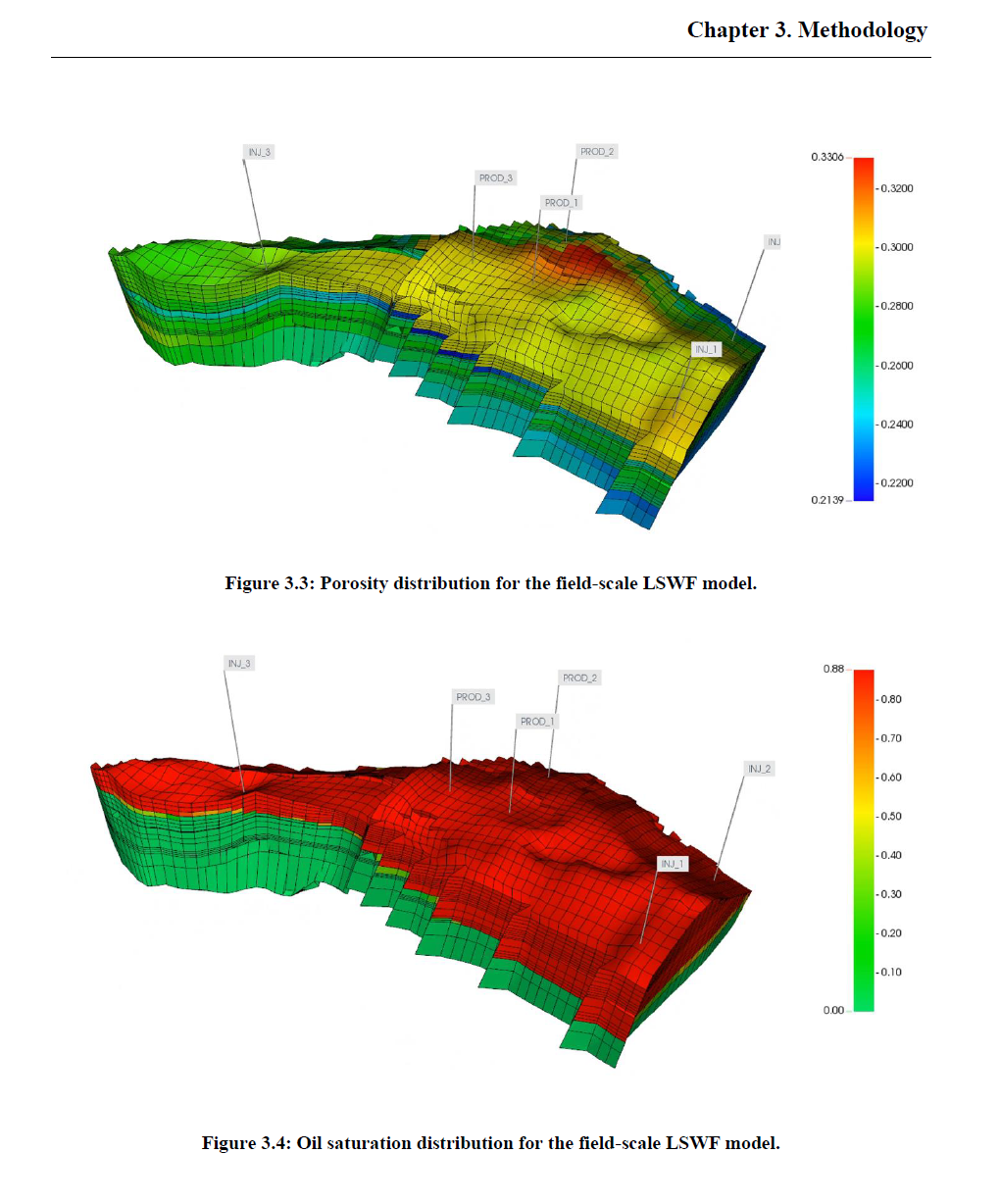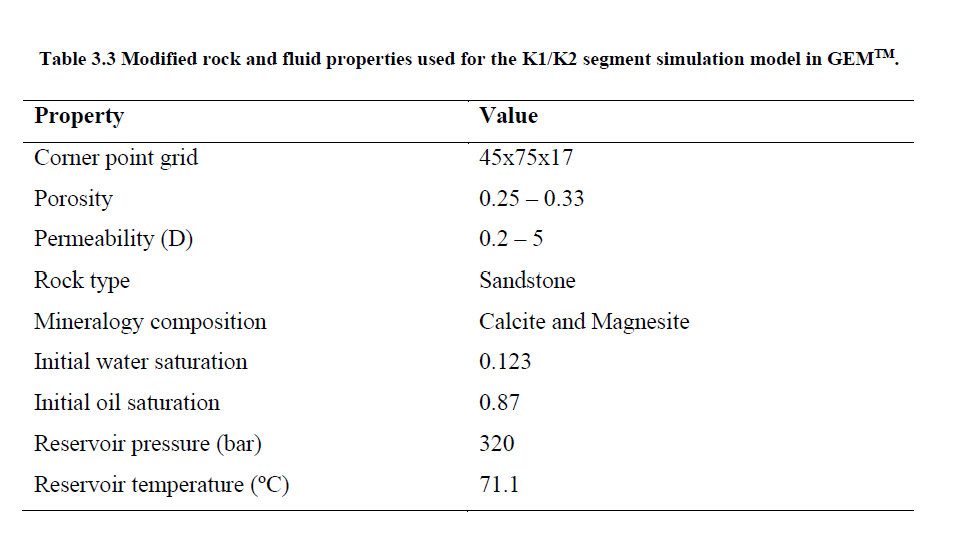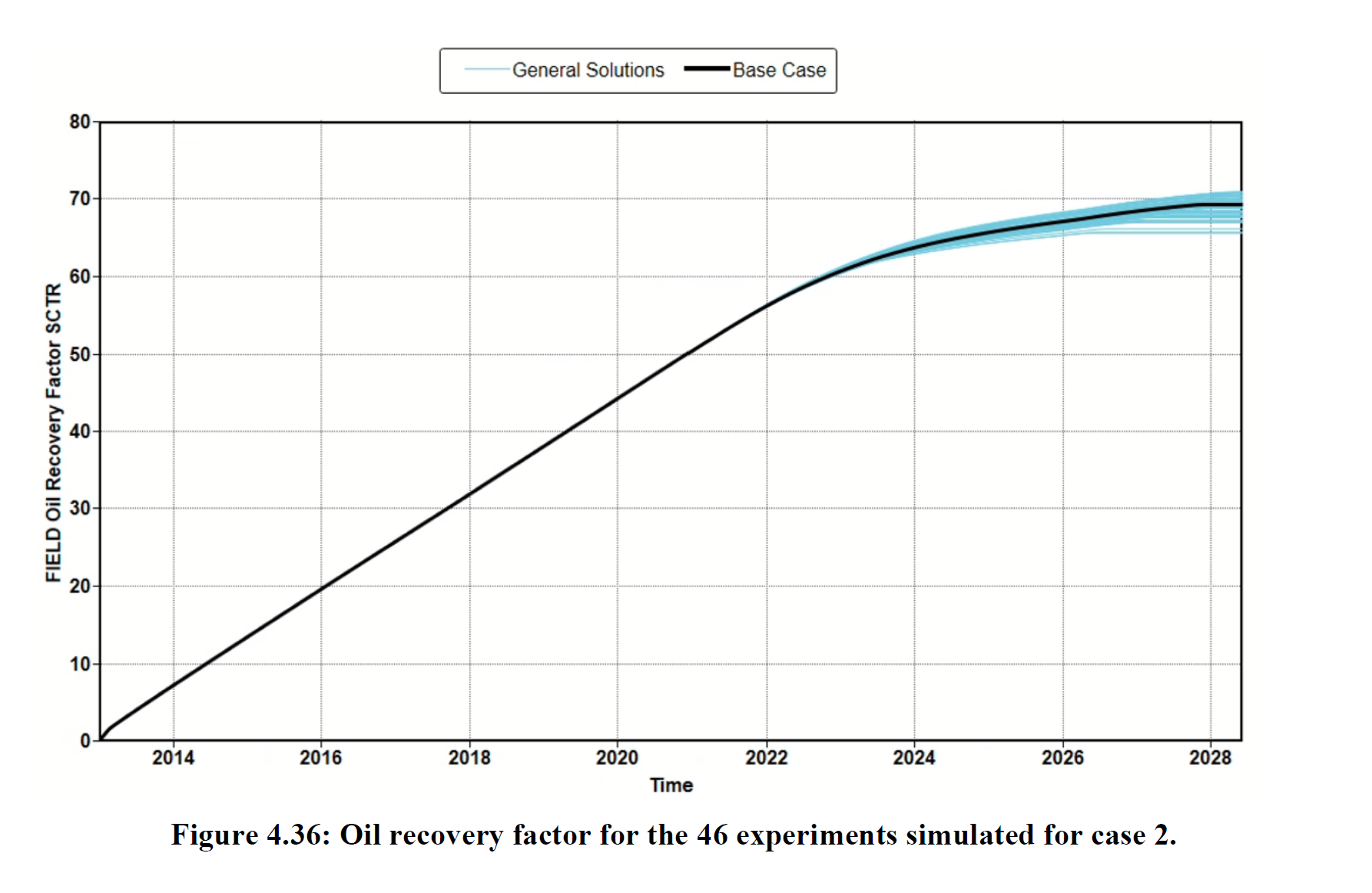低矿化度水驱(LSWF)是一种通过改变注入水的离子组成和矿化度来提高采收率的方法。该技术化学成本低,与其他EOR方法相比被认为是环境友好的。广泛的实验室研究和一些中试油田试验也显示出石油采收率的有利提高。在LSWF背后提出的机制中,润湿性向更水湿状态的改变是广泛认同的机制。Dang等人(2013)提出了LSWF的机制数值模型,包括离子交换、地球化学和岩心尺度的润湿性变化。新的LSWF模型使用了CMG的状态方程组分模拟器GEM。
本文以Dang et al.(2016)提出的地球化学模型为基础,对GEM中LSWF的现场尺度建模进行了研究。为了使现场规模模型更加逼真,地质模型基于Gullfaks K1/K2段。通过使用DataImporter软件和大量手动修改,将Gullfaks K1/K2段Eclipse文件中的地质数据转换为GEM。原油成分是根据Gullfaks数据库中的Statfjord地层岩心信息生成并集中在WinProp中的。由于Gullfaks K1/K2段缺乏地层水的水分析,因此使用Fjelde等人(2012)的水分析进行了一些修改。润湿性改变过程是基于地球化学反应引起的润湿性变化来建模的。定义了两组相对渗透率曲线,分别代表高盐度曲线和低盐度曲线。基于粘土表面Ca2+的离子交换当量分数,在两个相对渗透率组之间进行插值。在CMOST中对井控条件进行了优化,以建立高矿化度水驱(HSWF)的最佳基本情况。
LSWF的最终采油率高于HSWF。结果表明,发生了离子交换和吸附,这与Dang等人提出的假设一致。(2016)。对网格细化的敏感性分析表明,原始网格足够精细,可以进行进一步评估。注入时间的进一步敏感性表明,与三次模式相比,二次模式下的LSWF更有效。此外,降低LSW矿化度有利于润湿性的改变过程。对Kro从HS曲线到LS曲线变化的两个相对渗透率模型的敏感性分析表明,相应的插入剂值和Sor是主要决定原油采收率增量的因素。本文深入了解了如何在GEM中配置矿场尺度LSWF的润湿性变化模型。
Field-Scale Modeling of Low Salinity Water Flooding – Wettability Alteration
Abstract
Low salinity water flooding (LSWF) is an EOR-method where the ion composition and salinity of the injected brine are modified. The technique has a low chemical cost and is considered environmentally friendly compared to other EOR-methods. Extensive laboratory studies and some pilot-field trials have also shown favorable increase in oil recovery. Among the proposed mechanisms behind LSWF, the wettability alteration towards a more water wet state is the widely agreed mechanism. Dang et al. (2013) proposed a mechanistic numerical model for LSWF that included ion exchange, geochemistry, and wettability alteration on core-scale. The new LSWF model used the equation-of-state (EOS) compositional simulator GEM by CMG.
This thesis addresses field-scale modeling of LSWF in GEM by using the geochemical model presented by Dang et al. (2016) as a fundament. To make the field-scale model more realistic, the geological model is based on the Gullfaks K1/K2 segment. The geological data from Gullfaks K1/K2 segment’s Eclipse file is converted to GEM by using the software DataImporter and considerable manual modifications. The crude oil composition is generated and lumped in WinProp based on information of a Statfjord formation core found in the Gullfaks-database. Since the Gullfaks K1/K2 segment is lacking water analysis of the formation water, the water analysis from Fjelde et al. (2012) is used with some modifications. The wettability alteration process is modeled based on a shift in wettability due to geochemical reactions. Two sets of relative permeability curves are defined representing high salinity curves and low salinity curves. Interpolation occurs between the two relative permeability sets, based on the ion exchange equivalent fraction of Ca2+ on the clay surface. Optimization on well control was done in CMOST to establish an optimal base case for high salinity water flooding (HSWF).
The final oil recovery seen for LSWF was higher compared to HSWF. The results indicated that ion exchange and adsorption took place, which was in agreement with the hypotheses presented by Dang et al. (2016). A sensitivity analysis on grid refinement stated that the original grid was fine enough for further evaluation. Further sensitivity of timing of injection revealed that LSWF in secondary mode was more effective compared to tertiary mode. In addition, lowering the salinity of the LSW brine was found to be favorable for the wettability alteration process. A sensitivity analysis on two relative permeability models with varying change in Kro from HS curves to LS curves indicated that the corresponding interpolant values and Sor is what mainly determines the incremental oil recovery. This thesis provides an insight on how wettability alteration modeling of field-scale LSWF is configured in GEM.







